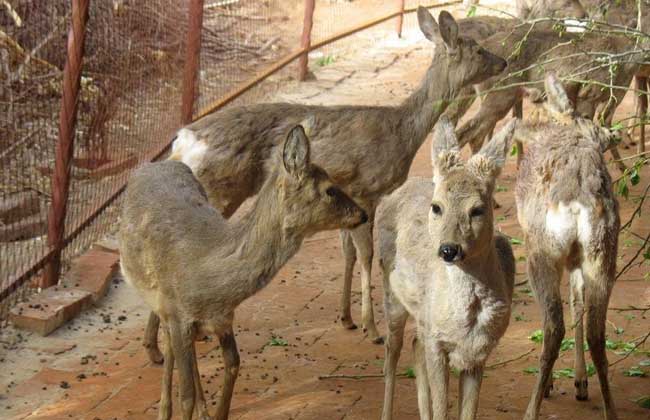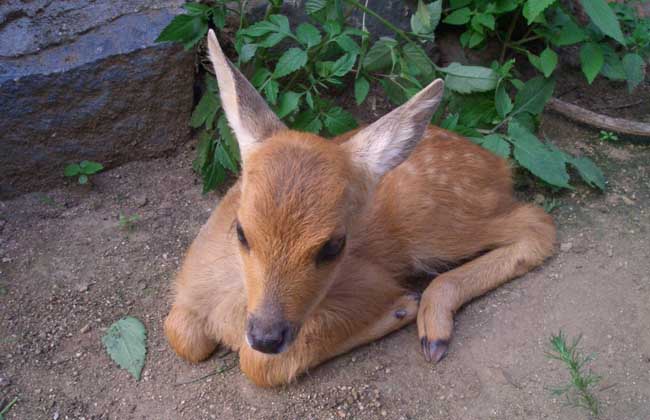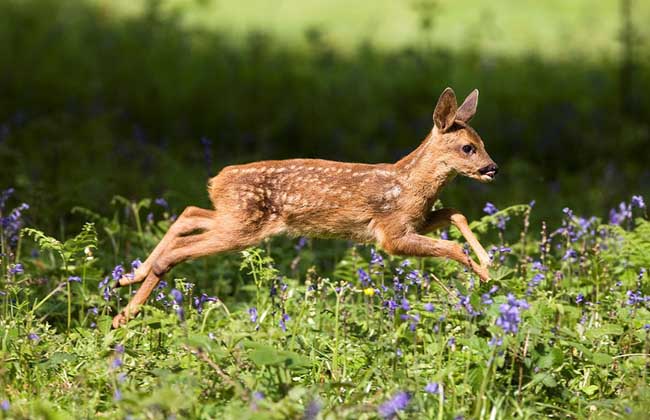Technical video of mackerel culture
Lianzi, a herbivore of the subfamily Cervidae, is one of the common wild animals in the northeast forest region. It likes to eat the twigs, buds, leaves and all kinds of grass, small berries and mushrooms of shrubs. It is of high economic value and has high breeding prospects. Let's take a look at the breeding technology video!

The living habits of Zi Zi
1. Eating habits: Zi Zi likes to eat twigs, buds, leaves and all kinds of grass, small berries and mushrooms of shrubs. In spring, like deer, he often goes to the saline-alkali ground to add salt. Generally by the mother roe deer and its offspring constitute a family group, usually 3-5, twilight activity, feed on grass, mushrooms, berries.
2. Reproduction: the male roe deer only enters the group in midsummer, one male and one female, mating from July to August. During the breeding period, the male roe deer chases the female roe deer to run in a circle, and a wreath-shaped footprint appears on the ground. The gestation period is 8 months. Before giving birth, the female roe deer disperse the young roe deer born last year and give birth in the dense forest. The young roe deer is born from March to June, with 1-2 cubs per baby. If a baby gives birth to 2 cubs, the place of birth is 10-20 meters apart. 10 days after birth. The mother roe deer led the newborn roe deer to return to the group and matured sexually for 1.5-2 years.
3. Longevity: in the wild environment, the longevity is 10-12 years, the longest is 17 years, the horn falls off from November to December every year, the antler grows from 2 to 3 months, and the horn grows from 4 to 5 months.
The advantages of culturing mackerel
1. Wide feeding habits and tolerance to rough feeding: domestic can feed straw, seedling vines, branches and leaves, weeds, forage grass, grain and so on.
2. Fast growth and low feeding cost: young roe deer start feeding at 15 days after birth, weaning for 60 days, weight up to 10 kg in 3 months, 20 kg in 6 months, 40 kg in more than 400 days, and reproduce after sexual maturity.
3. Strong adaptability, wide range of breeding, easy to raise and easy to manage: summer can withstand 38 ℃ high temperature, winter can withstand-45 ℃ cold, strong adaptability, domestic roe deer can be fed 3-4 times in summer and 2-3 times in winter. Anyone can raise successfully as long as they keep clean drinking water, sanitation and a quiet and clean feeding environment.
4. The roe deer has strong disease resistance and high survival rate of reproduction: roe deer is originally a wild animal with strong disease resistance, and it is artificially reared. As long as it is fed properly, it does not get sick all the year round, and it produces a twin lamb every year, with more than 3-4 lambs. The lambing rate is more than 2 times that of other deer. As long as it is raised reasonably, the mother produces its own milk, and the survival rate can reach 100%.
The culture value of Fructus ostreatus
1. Antler producing semen, tonifying marrow, nourishing blood and tonifying yang can improve memory, promote growth and metabolism, improve immunity, anti-fatigue, anti-aging, and strengthen the body.
2. Fresh and tender meat with high nutritional value, the total amino acid content is 4.7% higher than beef, while cholesterol is 33.8% lower than beef. High-quality meat is 3% higher than beef and 10% higher than mutton. It has the dual health function of nourishing yin and tonifying yang. It is known as the "king of lean meat" and is famous at home and abroad. In ancient times, there is a legend that "eating roe deer meat becomes immortal". In fact, it is said that roe meat has high nutritional and health value, often eats roe meat, is strong and prolongs life.
3. The fur of Yuzi can be used as a mattress, which is moistureproof. Summer skin lacks fluff, which is called "sand skin". After processing, it can be made into clothes worn in spring and autumn. if all the hair is shaved, the rest of the leather plate can be used to make summer clothes, winter fur is more fluffy, suitable for making leather clothing to protect against the cold.
4. The blood, heart, liver, kidney, bone and meat of Fructus Rehmanniae all have the function of tonifying body and longevity, and have the double health effect of nourishing yin and nourishing yang.
Culture techniques of mackerel
1. Building a house: the circle should choose a place with flat terrain, high dryness, ventilation to the sun and good drainage. It is composed of a shed and a sports ground, each of which occupies an area of 2-2.5. A 2-meter-high fence or wall is built with wooden poles or bricks around. A food trough and a drinking trough are set in the corner of the playground, and trees can be planted for shade outside the fence.
2. Feed: wild roe deer has a wide range of food sources, and all kinds of broad-leaved leaves, wild weeds, crop straw, vegetables, fruit peel and so on are its favorite feed. It is better to feed 20% legume forage (such as alfalfa), but not water grasses. To prevent diarrhea, enteritis, etc., the feed ratio should be 95% coarse feed and 5% concentrate, during mating, pregnancy, lactation, etc. It is necessary to appropriately add some concentrate feed and protein-rich feed. Roe deer eat soil 7 days after birth, and the clean soil in the semi-shady land should be stacked in the house for free feeding.
3. Feeding
① fixed time, feeding 3 times a day, respectively, 7: 00 in the morning, 12:00, 6: 00 in the evening.
The quantity of ② is small, and the diet of adult roe deer is 1.5kg roughage and 100g concentrate.
③ fixed water, supply enough water, can not be interrupted, let roe deer drink freely, drink warm water in winter.
4. Disease prevention: the animal has strong disease resistance and rarely gets sick, but it is necessary to achieve early prevention without disease, clean the enclosure every day, remove feces, disinfect the shed with fire alkali or 20% lime emulsion once a week in spring and summer, and scrub the food trough and sink every day. Do not feed moldy and spoiled feed, do not feed water plants. The common diseases of roe deer are diarrhea and enteritis, which can be treated according to routine treatment once found.
5. out of the column: timely Lan Zai roe deer is weaned for 60 days, and species of roe deer can be sold after weaning. Commercial roe deer are mostly male roe deer and eliminated roe deer, so we should pay attention to species selection in order to maintain a good population.
Note: it has been listed in the list of beneficial terrestrial wildlife under national protection or with important economic and scientific research value, which was promulgated and implemented by order No. 7 of the State Forestry Administration on August 1, 2000. Any act of hunting roe is illegal, and it is strictly forbidden to hunt, buy, sell or eat wild oyster.
Related
- A course of planting techniques and methods on how to grow carrots
- How to plant the latest tulips?
- Is it better to pick tea in the morning or in the afternoon? When is the best time for tea to be picked? what is the third or fifth tea?
- Launch Yuanxiao Happy combination Haocha + Tea Yuan healthy Taste
- Penghu Tourism "Fireworks 20 Parade with You"
- 2022 West Lake Happiness holds "Digital Revitalization Voucher" and draws iphone13 and laptop.
- Banqiao Fuzhou social houses are designed to change start-up combined with police elimination to create a safe and livable environment
- The convenient measure of "mechanical weeding" in Xinbei has been abused and the Agriculture Bureau has imposed heavy penalties on the illegal land consolidation.
- Changgeng University Joins Hands with Four Memory Factories to Rescue Memory Talent Shortage
- The list of Taiwan's top 100 MVP managers is listed by the Director-General of the Farmers' Association of Sanxia District.



